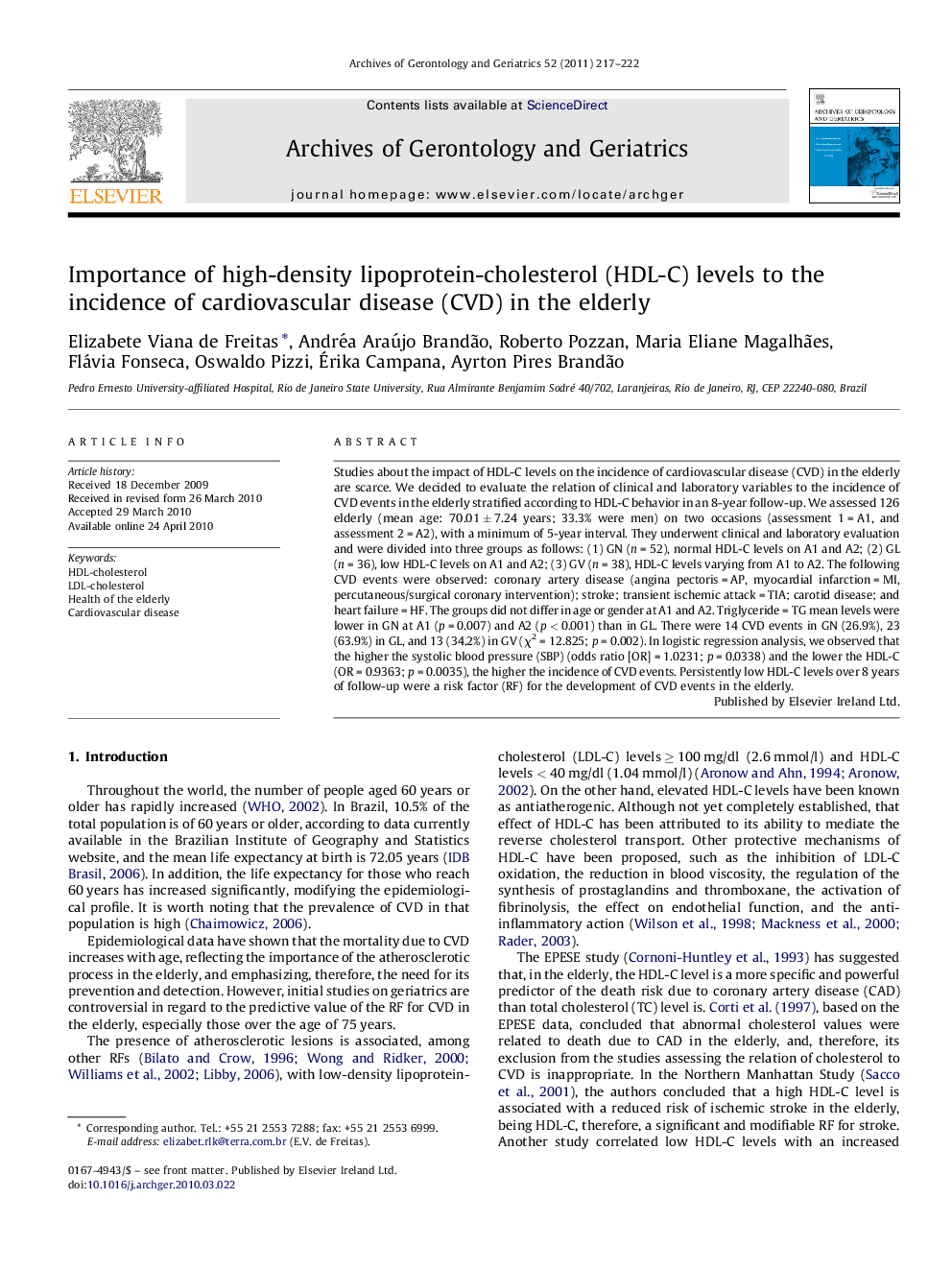| Article ID | Journal | Published Year | Pages | File Type |
|---|---|---|---|---|
| 1903134 | Archives of Gerontology and Geriatrics | 2011 | 6 Pages |
Studies about the impact of HDL-C levels on the incidence of cardiovascular disease (CVD) in the elderly are scarce. We decided to evaluate the relation of clinical and laboratory variables to the incidence of CVD events in the elderly stratified according to HDL-C behavior in an 8-year follow-up. We assessed 126 elderly (mean age: 70.01 ± 7.24 years; 33.3% were men) on two occasions (assessment 1 = A1, and assessment 2 = A2), with a minimum of 5-year interval. They underwent clinical and laboratory evaluation and were divided into three groups as follows: (1) GN (n = 52), normal HDL-C levels on A1 and A2; (2) GL (n = 36), low HDL-C levels on A1 and A2; (3) GV (n = 38), HDL-C levels varying from A1 to A2. The following CVD events were observed: coronary artery disease (angina pectoris = AP, myocardial infarction = MI, percutaneous/surgical coronary intervention); stroke; transient ischemic attack = TIA; carotid disease; and heart failure = HF. The groups did not differ in age or gender at A1 and A2. Triglyceride = TG mean levels were lower in GN at A1 (p = 0.007) and A2 (p < 0.001) than in GL. There were 14 CVD events in GN (26.9%), 23 (63.9%) in GL, and 13 (34.2%) in GV (χ2 = 12.825; p = 0.002). In logistic regression analysis, we observed that the higher the systolic blood pressure (SBP) (odds ratio [OR] = 1.0231; p = 0.0338) and the lower the HDL-C (OR = 0.9363; p = 0.0035), the higher the incidence of CVD events. Persistently low HDL-C levels over 8 years of follow-up were a risk factor (RF) for the development of CVD events in the elderly.
